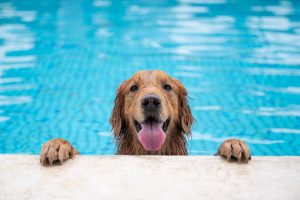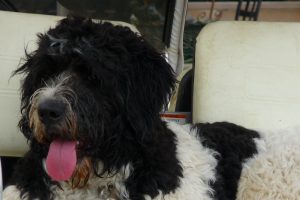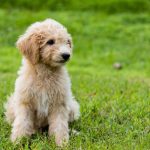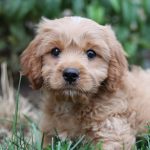The arrival of a new puppy is always an exhilarating and heartwarming experience. The bond between an individual and their loyal canine companion is truly unparalleled. However, before you welcome your furry friend, it’s crucial to prepare your space for the curious and occasionally mischievous nature of this brand-new family member.
The initial period involves an adjustment as your puppy familiarizes itself with your home and family members, making it essential for you to be well-prepared and anticipate the needs of your four-legged friend.
Wondering how to prepare your home for a new puppy? Well, every puppy/dog has different requirements and you must prepare for it accordingly. You should prepare a first aid kit, learn basic training tips to train your puppy, get essential supplies, and dog-proof or puppy-proof your home. Check Puppy First Day Home – Do’s and Don’ts to read more on this.
If you are not sure how to puppy-proof your home, we have added plenty of ways and things to do so. Here is a checklist for each area of your home to ensure a safe introduction for your new puppy.
Table of Contents
Bathroom/Kitchen
– Store all hazardous materials such as chemicals, cleaning supplies, medications, and laundry supplies on a high shelf or behind a cabinet with childproof latches.
– Keep all food out of reach as many foods can be toxic to a dog (for example grapes, garlic, and chocolate), especially to the developing stomach of a young puppy. Even if the food is non-toxic, the wrapping can pose a choking hazard.
– Secure the lids of all trash cans to keep your pup out of your garbage.
– Make sure the lids of all toilet seats are securely closed to prevent your puppy from falling in or drinking dirty water.
– Use baby gates to close off rooms and keep your puppy contained in the naturally uncarpeted kitchen while potty training for an easier cleanup of messes.
Livingroom
– When first introducing your new puppy to the living room, keep them on a leash and walk them through the space to control where they explore.
– Unplug or securely store out of reach any electrical cords from lamps, TVs, DVD players, and other items to prevent electrical burns from chewing the dangerous wires.
– Move house plants out of reach so your pup does not dig or knock them over. Additionally, ensure that all plants in the home are non-hazardous and do not pose a health risk to your canine. There are several plants that are highly toxic for dogs such as English Ivy, Yew, Foxglove, Virginia Creeper, etc.
– Ensure all heating and air vents are securely covered.
– Put away children’s toys, games, and knick-knacks that pose a choking hazard or you do not want to be damaged.
– Inspect all narrow areas where your vacuum cannot reach for missed items.
– Put away all breakable items to prevent your puppy from accidentally knocking them over.
– While potty training, secure your puppy in a small area using a fence and line the floor with puppy pads to prevent accidents on your carpet.
Bedrooms
– Keep all clothing and shoes put away in closets and drawers to prevent your new puppy from choking on buttons and strings.
– Make sure all lotions, cosmetics, and medicine are placed on a high shelf or behind a locked cabinet. They may be highly toxic for your fur baby.
– Secure any cords or phone wires so your puppy cannot access them.
– If you choose to have your pup sleep in your bedroom with you at night, contain them in a crate so they cannot freely roam while you’re asleep, especially before they are potty-trained. Even if they are potty-trained, they may initiate a disaster if not under your supervision.
– Many dog owners prefer to sleep together with their puppies. In that case, it is helpful to have a ramp next to the bed for easy access such as this dog ramp for bed.
Garage
– Just as with the kitchen and bathroom, move all chemicals and sharp objects to a secure location out of reach of your curious puppy.
– Inspect your garage floor to ensure there are no dangerous spills that pose a health risk to your dog.
– It’s also wise to consider selling scrap you may have accumulated. Ensuring a safe and secure environment for your furry friend is paramount. Selling scrap not only helps in covering initial pet-related expenses but also allows you to eliminate potential hazards and clutter that can pose risks to your new companion.
Outside
– If possible, install a fence around your yard so your puppy can safely roam on your property without danger of being escaped. Inspect any pre-existing fencing to ensure there are no holes or small cracks where your pup can escape.
– Make sure all plants in your yard are safe and non-toxic for your dog. (We’ve already mentioned some toxic plants above)
– Erect a fence around in-ground pools. Puppy drownings are a safety concern.
– Always keep your dog out of the yard if it has been recently treated with pesticides, insecticides, and fertilizers. These are all toxic to your puppy’s health and can lead to serious issues.
– Avoid leaving your dog outdoors during the hottest hours of the day. Additionally, provide a clean source of water for your pup to stay hydrated.
– Clean up after your puppy once they use the bathroom. Some dogs will try to eat their own feces.
– Never leave your new puppy unattended outside.
Conclusion
Remember, a puppy loves to explore everything by licking, sniffing, and chewing. If your home is not puppy-proofed, it may result in a disaster.
Creating a safe and pet-friendly home for your new puppy takes some time and effort. You must anticipate all the potential dangers within your home and actively work to reduce the risks of injury or damage before your puppy is brought home. But with a few simple accommodations, you will quickly transform your home into a puppy-proofed space that will not only keep your new pet safe but allow you to fully enjoy your new addition without fear or worry.
Recommended read – Chiweenie Dog Breed Info
Image credit: https://libreshot.com/









